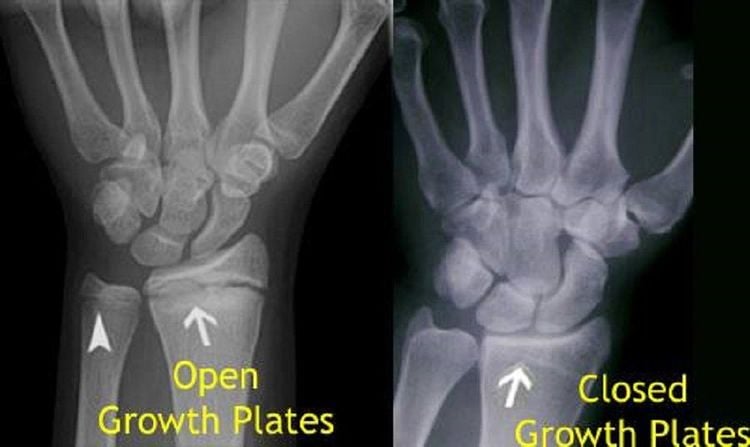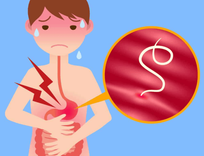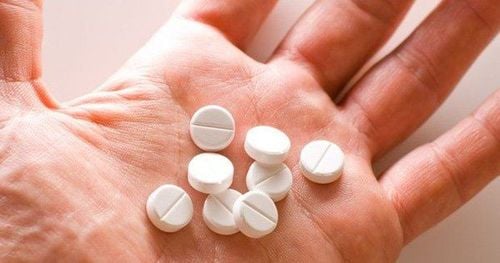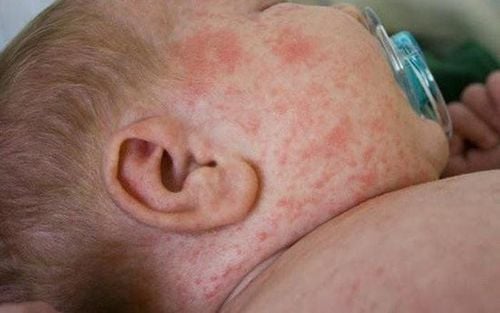Growth cartilage is made up of cartilage, a rubbery, flexible structure. Growth cartilage helps determine the future length and shape of mature bones. Currently, many parents are not aware or do not know when growth cartilage closes, which has hindered the application of height care methods for their children.
1. What is the role of growth cartilage?
Long bones grow after chondrocyte cells rapidly produce in the growth plates of the bones. Therefore, to improve bone development, delaying the closure of growth plates is necessary.
Each long bone has 2 growth plates at the ends. Cartilage is formed at the growth plate area, then hardens by calcium deposition, forming bone tissue. Therefore, the growth plate is where the development of long bones occurs. This bone area is sometimes weaker than the tendons and ligaments that connect bones to other bones and muscles.
The development of the skeleton at the growth plates is continuous and changing. The cells found on the growth plate cartilage create a template that serves as the foundation for bone formation.
Immature chondrocyte cells begin by rapidly multiplying, maturing, and eventually dying, forming new bone tissue on the remaining cartilage.
Flat bones like the skull do not develop from cartilage. They are structured by osteoblasts during development. Osteoblasts are bone-forming cells that create a matrix that becomes mineralized. The cells in the skull bones transform into osteoblasts, which then produce collagen and create soft bone, which is broken down by osteoclasts to form flat bones.
The process of cartilage growing and being deposited into bone, allowing bones to grow longer, is called the ossification process. The ossification process occurs at the points at the ends of bones containing growth plate cartilage. A child will grow over time, and the development of bone length determines the increase in the child's height. This growth process occurs throughout childhood and accelerates during puberty. Puberty is also the last period when the body can significantly increase height.

2. When does growth cartilage close?
Growth cartilage is eventually replaced by bone or closes because the proliferation of cells in the growth plate gradually decreases.
This has been demonstrated by implanting estradiol cypionate into rabbits for 5 weeks to reduce the height of the growth plate cartilage and the number of proliferating cartilage cells. Estradiol is the main component and one of the three natural estrogens produced in the body. The other substances are estrone and estriol. The primary role of estradiol is to regulate the menstrual cycle and the reproductive system in women, as well as to develop sexual characteristics such as hip widening and breast development. In men, estradiol regulates libido, sperm production, and erectile function.
At the end of puberty, estradiol production increases, although levels are higher in females than in males. Therefore, the increase in estrogen levels at the end of puberty will promote or catalyze the fusion of the growth plates.
- Age when growth plates close or become inactive
The timing of growth plate closure varies from person to person. According to Dr. Andre C. Grant, an orthopedic surgeon at Duke Orthopedics of Raleigh, most children stop growing about 2 years after the end of puberty, typically ending at 14 years old for girls and 16-17 years old for boys
This means that in most cases, growth plates close around 14 to 16 years old for girls and 16 to 19 years old for boys. In cases of early puberty, children mature into adults earlier than expected. Growth plates close earlier, leading to shorter stature.
If a girl reaches puberty before 8 years old or if a boy reaches puberty before 9 years old, it is called early puberty. However, the entire process of growth plate closure in humans is not fully understood because what is known is based on animal studies, but most animals do not have much in common with humans.
Rodents have some degree of correspondence with humans, but their growth plates do not fuse at the end of puberty.
- Role of hormones in the development of growth cartilage
Growth hormone (GH)
Growth hormone (GH) directly promotes bone elongation by stimulating the growth of cartilage cells. Research has shown that applying growth hormone directly to the growth plate cartilage of the tibia in pituitary-removed rats rapidly accelerates bone lengthening.
Estrogen
Estrogen accelerates bone maturation and speeds up the closure of growth plates. This process occurs because growth hormone (GH) stimulates inactive growth plate cells to rapidly multiply and form new bone tissue.
In girls who are predicted to be extremely tall as adults, estrogen is used to limit bone growth. Therefore, the increase in estrogen levels when girls have their first menstrual period is part of the reason why they stop growing within about two years after their first period.
- How to know if growth cartilage has closed?
When the ossification process is complete, the growth plates close as they have fully turned into bone. This is also the point when the body stops growing in height. To accurately determine the closure rate of the growth plates, orthopedic specialists will request an X-ray to observe the ossification points. X-rays are the most reliable method for doctors to accurately assess your child's current height growth potential.
On an X-ray, growth plates appear as dark lines at the ends of the bones. In the final stages of growth, when the cartilage has hardened into bone, these dark lines are no longer visible on the X-ray. At this point, the growth plates are considered closed.

3. How to delay the fusion of growth cartilage if your child is still in puberty (how to keep growth cartilage open)?
3.1. Supplementing with resveratrol
Resveratrol is a substance produced by plant tissues when the plant is attacked by parasites or injured. Resveratrol supplements have several health benefits in humans, such as reducing blood fat.
In an experiment to evaluate the long-term effects of resveratrol on growth plate cartilage, bone development, and growth plate fusion, prepubescent female rabbits were used as the study subjects.
Rabbits were chosen because the timing of growth plate fusion in rabbits usually occurs at sexual maturity, similar to humans. Treatment with resveratrol in rabbits improved vertical bone growth and delayed growth plate fusion.
It was concluded that resveratrol has the potential to improve vertical bone growth. This effect is related to the delay in growth plate fusion, leading to an increase in final bone length.
3.2. Tamoxifen (Nolvadex)
A medication used to treat gynecomastia, which is the enlargement or swelling of breast tissue in men. This condition typically results from an imbalance where there is too much estrogen compared to testosterone in men
Estrogen is a female sex hormone responsible for developing reproductive and sexual features in women, including breasts. Tamoxifen is also used to treat breast cancer in both men and women.
When adolescent boys aged 14-15 years are given 10-20mg of tamoxifen twice daily for an average of 26 months, their bone maturation slows significantly. This delay in the closure of their growth plates results in an increase in their predicted adult height by approximately 10 cm.
3.3. Aromatase inhibitors
Aromatase is an enzyme responsible for synthesizing estrogen by converting androgens into estrogen. Androgens are hormones responsible for male characteristics, such as testosterone. Aromatase inhibitors are drugs that interfere with estrogen secretion. They are also used to treat cancer in older women, including Letrozole, Aromasin, and Arimidex.
When puberty ends, the reproductive glands in both males and females secrete higher amounts of estrogen. Estrogen then accelerates the closure of growth plates. Therefore, because aromatase inhibitors suppress estrogen production, the closure of growth plates is delayed by the medication.
However, all drugs and supplements should be used under strict medical supervision.
Your child's body has fully developed and has slowed down the height growth process. Typically, the average age for growth cartilage ossification is 20 years old. Therefore, height usually stops growing when you turn 20. There are still a few cases where height can increase after this age. However, the rate and ability to grow after 20 years old are very low.
To arrange an appointment, please call HOTLINE or make your reservation directly HERE. You may also download the MyVinmec app to schedule appointments faster and manage your reservations more conveniently.
Reference source: growtallerwithshinlengthening.com













